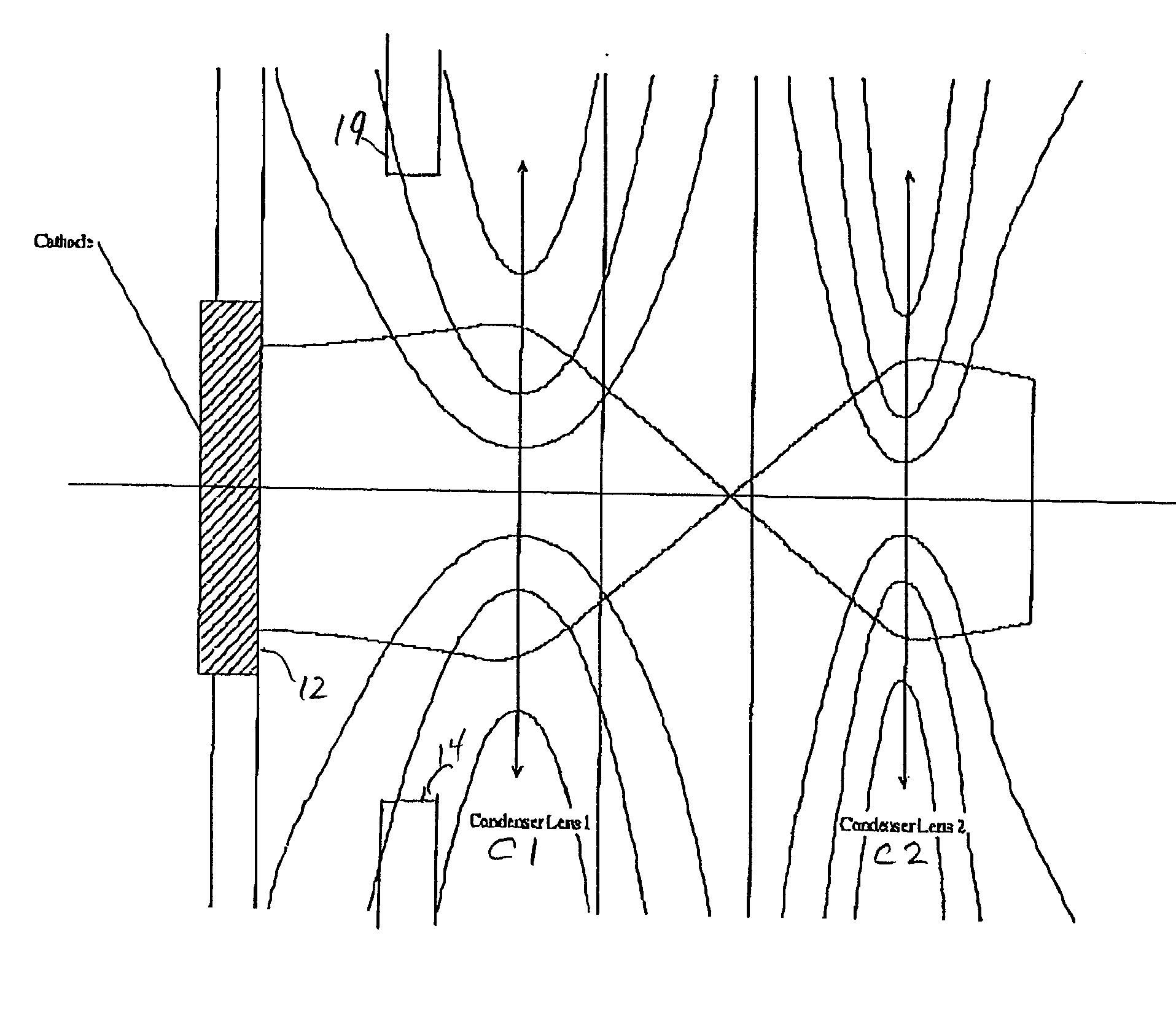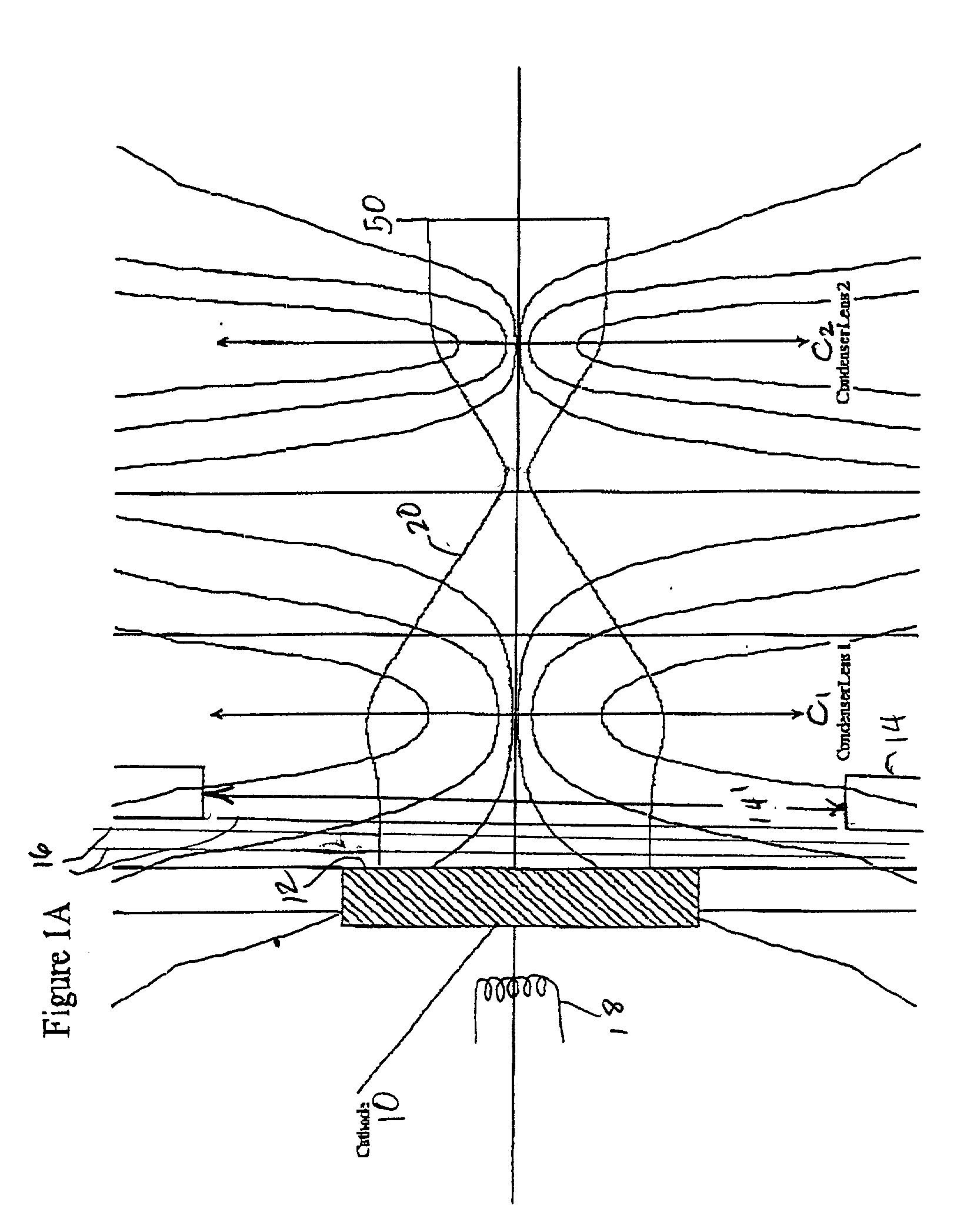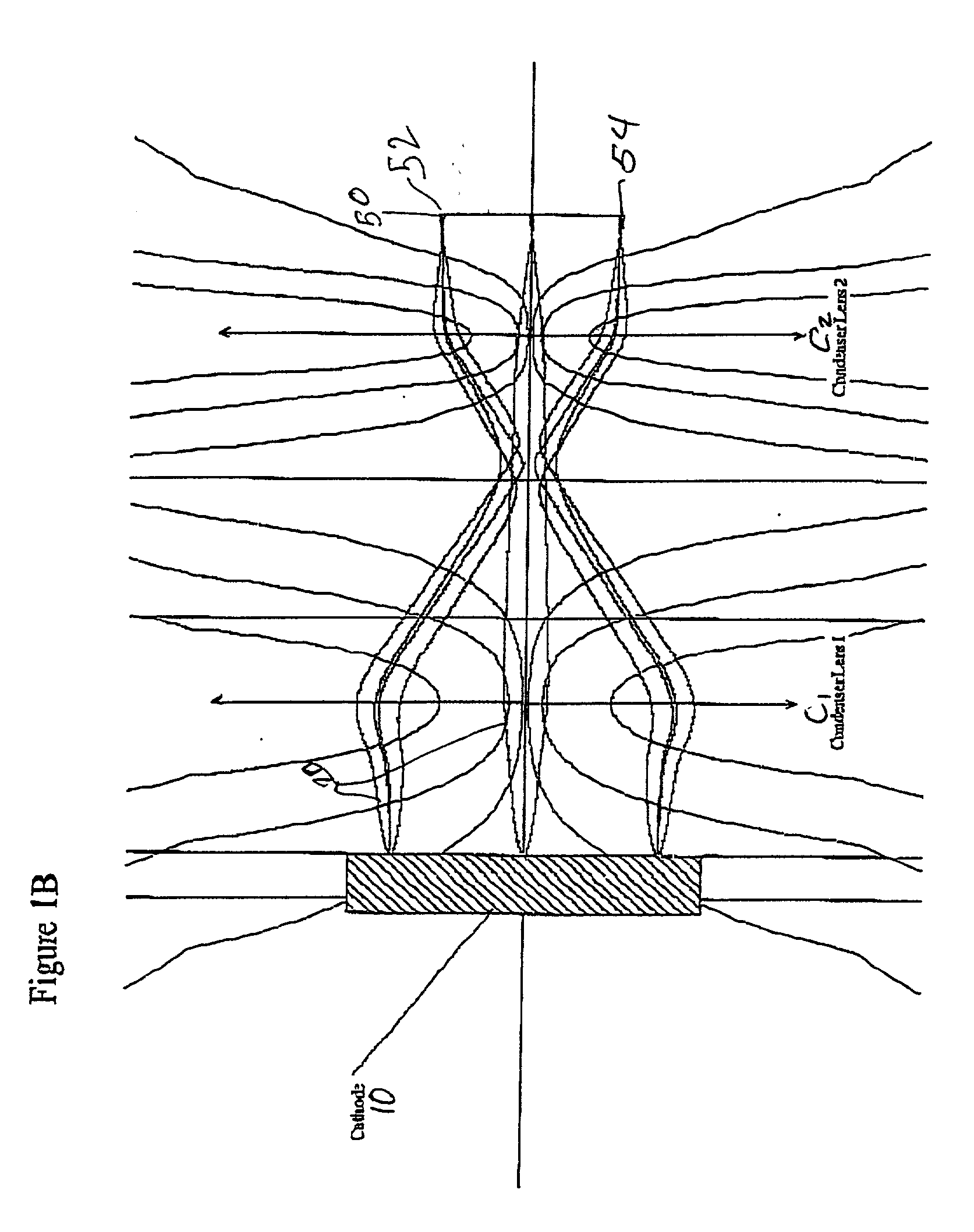High performance source for electron beam projection lithography
a lithography and electron beam technology, applied in the field of electron beam projection lithography tools, can solve the problems of insufficient throughput of probe-forming tools to support the production quantity of integrated circuits at the present state of the art, complex design, and difficulty in adjustmen
- Summary
- Abstract
- Description
- Claims
- Application Information
AI Technical Summary
Benefits of technology
Problems solved by technology
Method used
Image
Examples
first embodiment
[0037] Referring now to FIG. 2A, the invention will be discussed. The positions of the electron-optical elements as depicted in FIG. 2A are essentially the same as in FIG. 1A except that the surface 12 of cathode 10 is displaced from the anode 14 and condenser C1 by a moderate amount of, for example, 40 mm. It has been found that the result is already substantial, as shown in FIG. 2B, as electrons from the emitter points far off the axis closely approach the axis, thus reducing the cross-over in size to almost its theoretical minimum.
[0038] It should be understood that the excitations of both condenser lenses C1 and C2 must be readjusted to re-establish the proper imaging conditions required by the entire projection system. The trajectories illustrated in FIG. 2A (and 3A) do not show the trajectories after such readjustment but are intended to illustrate the important effect of the invention on the crossover which serves as the illumination source for the remainder of the system.
second embodiment
[0039] the invention will now be explained in connection with FIG. 3A. FIG. 3A is the same as FIG. 1A except that an additional thin magnetic lens, referred to as a bucking lens, C.sub.B is interposed between first condenser lens C1 and the cathode (and preferably within or preceding the anode), and the improved electron trajectories achieved thereby are shown. This lens is preferably driven proportionally and with the opposite polarity to first condenser lens C1 such that the magnetic field at the surface 12 of cathode 10 is reduced to zero (e.g. fully counterbalancing the field of lens C1).
[0040] Therefore, lens C.sub.B fully shields the cathode from the field of the first condenser lens C1 and effectively eliminates the magnetic field which can impart angular momentum to the electrons until they have been substantially accelerated by the electrostatic field between the cathode 12 and anode 14 and cannot be perturbed as readily as is possible at lower velocities and energies, as c...
PUM
 Login to View More
Login to View More Abstract
Description
Claims
Application Information
 Login to View More
Login to View More - R&D
- Intellectual Property
- Life Sciences
- Materials
- Tech Scout
- Unparalleled Data Quality
- Higher Quality Content
- 60% Fewer Hallucinations
Browse by: Latest US Patents, China's latest patents, Technical Efficacy Thesaurus, Application Domain, Technology Topic, Popular Technical Reports.
© 2025 PatSnap. All rights reserved.Legal|Privacy policy|Modern Slavery Act Transparency Statement|Sitemap|About US| Contact US: help@patsnap.com



